Cardiff City
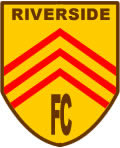
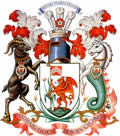 In 1920 The Football League decided to incorporate the Southern League First Division as the new Third Division. The three clubs who had finished bottom of Division Two had to apply for re-election. Cardiff City decided to challenge them for a place in Division Two and were duly elected, effectively pinching a promotion over their Southern League colleagues. City went on to finish as runners-up and were promoted to Division One at the first attempt. The Twenties turned out to be City's golden period: in 1924 they were runners-up in the League, finishing equal on points with Huddersfield Town but losing out on the narrowest of goal average margins - 0.024. The following year, City reached the FA Cup final but lost to Sheffield United by a single goal. Then, in 1927, the club won the FA Cup, beating Arsenal 1-0. Famously, this is the only occasion that the FA Cup has been taken out of England. In both of these games, the coat of arms of the city of Cardiff was worn on the team's shirts.
In 1920 The Football League decided to incorporate the Southern League First Division as the new Third Division. The three clubs who had finished bottom of Division Two had to apply for re-election. Cardiff City decided to challenge them for a place in Division Two and were duly elected, effectively pinching a promotion over their Southern League colleagues. City went on to finish as runners-up and were promoted to Division One at the first attempt. The Twenties turned out to be City's golden period: in 1924 they were runners-up in the League, finishing equal on points with Huddersfield Town but losing out on the narrowest of goal average margins - 0.024. The following year, City reached the FA Cup final but lost to Sheffield United by a single goal. Then, in 1927, the club won the FA Cup, beating Arsenal 1-0. Famously, this is the only occasion that the FA Cup has been taken out of England. In both of these games, the coat of arms of the city of Cardiff was worn on the team's shirts.
There is some difficulty establishing the shade of blue worn in these final and in the league in the late 1920s. Most photographs suggest they were rather pale but it is possible this is due to the peculiarities of the photographic technology of the period, which could make blue appear lighter than expected.
The end to Cardiff's First Division career came unexpectedly two years later when the team was relegated and in 1931, they dropped into Division Three South where they were to stay until after the Second World War.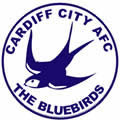
In 1947, the Bluebirds won the Third Division South Championship by a margin of nine points, fielding ten Welsh players and one Englishman. In 1952, 52,000 fans crammed into Ninian Park to see City beat Leeds United and clinch promotion back to Division One. They stayed at the top level for five years, spent three seasons in Division Two 1957-1960 before returning to 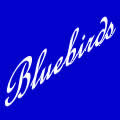 Division One. In 1959 the famous Bluebird crest made its first appearance.
Division One. In 1959 the famous Bluebird crest made its first appearance.
During the Sixties City wore "Bluebirds" embroidered on to their shirts. In 1962 Cardiff dropped back into Division Two and for the next 13 years, they languished in the mid to lower reaches of the Second Division although they narrowly missed out on promotion in 1971. In 1969 the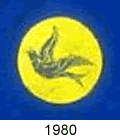 Bluebird crest reappeared, this time without any lettering (and the bird flying upwards rather than down). This simple, elegant motif is perhaps the most popular of all the designs associated with the club and was used for the next 16 seasons. In the 1980s yellow replaced the white background.
Bluebird crest reappeared, this time without any lettering (and the bird flying upwards rather than down). This simple, elegant motif is perhaps the most popular of all the designs associated with the club and was used for the next 16 seasons. In the 1980s yellow replaced the white background.
Despite mediocre league performances, City enjoyed frequent European campaigns by virtue of their participation in the Welsh Cup. English clubs often won the competition but could not qualify for the European Cup Winners Cup, their place going to a side based in Wales. In 1994 Welsh competition was restructured with the introduction of a national league and this back door into Europe was closed.
 In 1975 City dropped into Division Three for a single season but during the Eighties and Nineties, they were relegated and promoted with bewildering regularity. They had two spells in Division Two (1977-82, 1983-85), three in Division Three (1982-83, 1985-86, 1988-90) and two in the Fourth (1986-88, 1990-93). When the League restructured in 1993 City started off in Nationwide Division Two (third tier) having won the Fourth Division championship the previous season. Two years later they were back in the
In 1975 City dropped into Division Three for a single season but during the Eighties and Nineties, they were relegated and promoted with bewildering regularity. They had two spells in Division Two (1977-82, 1983-85), three in Division Three (1982-83, 1985-86, 1988-90) and two in the Fourth (1986-88, 1990-93). When the League restructured in 1993 City started off in Nationwide Division Two (third tier) having won the Fourth Division championship the previous season. Two years later they were back in the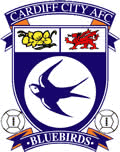 basement.
basement.
A new crest was introduced in 1985, with the club's name and nickname embroidered above and below the main badge. This was updated a few years later into a more elaborate design that incorporated the red dragon and daffodils of Wales as well as the familiar bluebird.
In 2000 the controversial Lebanese entrepreneur Sam Hammam bought the club. Hammam had previously masterminded Wimbledon FC's career in the Premiership before selling his interest. He now set out his goal of taking City to the Premier Division and with promotions in 2001 and 2003, Cardiff returned to the second tier now known as "The Championship". Hammam created controversy by courting the club's infamous hooligan followers, the so-called "Soul Crew."
 The club introduced a radical new crest for the 2003-04 Championship season: the bluebird was still present but now it appeared against the black and yellow flag of St David, a symbol that had grown increasingly popular as a symbol of Welsh national identity.
The club introduced a radical new crest for the 2003-04 Championship season: the bluebird was still present but now it appeared against the black and yellow flag of St David, a symbol that had grown increasingly popular as a symbol of Welsh national identity.
In 2005 Hammam hired Peter Ridsdale (who, as chairman of Leeds United, created the financial chaos that almost ruined the Yorkshire club), rapidly making him executive deputy chairman. Negotiations with the City & County of Cardiff Council over a new ground had stalled in 2006 because of doubts over the club financial security, when Hammam agreed to a £26m takeover by a consortium headed by Ridsdale. The deal finally went through in December, with financial administration looming, when the consortium agreed to pay Hammam's company an additional £500,000 (with a further £90,000 going to Hammam's brother).
Negotiations with the council were brought to a successful conclusion and a smart new stadium sprang up on the site of the former Leckwith Athletics Stadium, a stone's throw from Ninian Park. The land for the stadium was given to the club for nothing by the council, and in return the club pledged to build a community sports facility, to be funded by selling off part of the plot not needed for the stadium.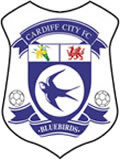
For the 2008-09 season, their last season at Ninian Park, fans were consulted on the crest to be used and came out in favour of reviving the 1985 version. The distinctive shade of the blue shirts worn that season was supposedly based on a swatch taken from a shirt worn in the 1927 FA Cup final. Cardiff successfully warded off a winding up order brought by a mysterious offshore consortium (widely believed to be an instrument of former chairman, Sam Hammam) and reached the FA Cup final for the first time in 81 years.
In the summer of 2009 Ninian Park was finally closed and the club moved into their brand new stadium. The team played in unsponsored shirts until a deal was signed with 777 Bet but these were dropped because the far-east company did not have a licence to trade in the UK. They were replaced by SBOBet from 29 September. Concern over the club's financial future reached crisis in 2010. Fans were encouraged to buy advance season tickets on the understanding that the funds raised would be used to strengthen the squad but in January, the club reneged on this promise. Furthermore it emerged that HMRC had taken out a winding-up order and that the club wanted to use the money raised from the sale of their spare plot to pay off their tax liabilities instead of building the promised community facility. Given this history, supporters were relieved when Ridsdale left after the club was bought by a Malaysian consortium led by Tan Sri Vincent Tan Chee Yioun at the end of the season.
